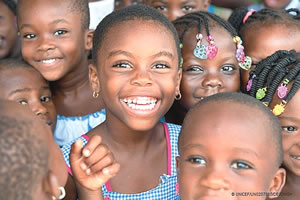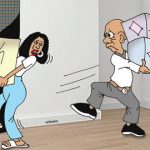BRUISES may seem like something normal for playful kids. However, even small bruises can signify something much more serious: child abuse. Being able to tell whether a bruise could be from abuse can help protect a child. Many people have the misconception that it is only abuse when the bruise is obvious and matches the size of an adult hand. In reality, the damage from abuse can manifest in a variety of different ways, including small and subtle bruises.
Bruises indicate bleeding beneath the skin. They are common childhood injuries that usually result from minor accidental trauma, such as a bump or fall, sustained during routine active play. Still, they are the most common findings in physically abused children and it does not have to be large in order to be significant or suggestive of abuse.
Dr Haleem Abdulrahman, a consultant psychiatrist at University College Hospital (UCH), Ibadan said that bruising in infants is rare, and in children who have been physically abused it is the most common injury seen.
He said bruises resulting from common accidental childhood trauma need to be differentiated from those that we inflicted intentionally.
According to him, “Bruises on an infant or child may be the reason for the medical visit or may be an incidental finding. Bruising must be evaluated in the context of a child’s developmental abilities, age and the explanation for an injury that is provided to identify bruises resulting from abuse in children in a bid to ensure future harm from maltreatment can be prevented.
“When children are brought in and there is evidence of injuries or scars that are not consistent with accidents, it should raise a suspicion of abuse. A child can mistakenly fall down and develops a wound on the knee. But when you see bruises all over the body, it may be evidence of deliberate harm to that child.
“A telltale sign of abuse might be signs of burns on any part of the body that is not suggestive that the child had mistakenly caused an accident. It could also be some abnormalities in the interactions between the child and the caregivers or parents that appear obviously abnormal that will signal a case of abuse or neglect”.
Children will get bruises from time to time. Not all bruising comes from abuse; children can bruise from everyday activities such as playing. Bruises usually occur on the front of the body, including over bony areas of the body such as the forehead, elbows, knees and chins.
Medical experts, however, are always suspicious of bruises on babies or children who are not independently mobile, scars that occur multiple times in similar shapes and sizes or on areas of the body such as the torso, ears, neck, eyes, cheeks and buttocks. The ear, for instance, does not bruise easily, so when they see a bruise in this location; it is a pointer to look carefully for additional trauma to the head.
Findings on a new screening tool that could improve earlier recognition of abuse in young children with bruising were recently published in the journal JAMA Network Open. The refined and validated bruising clinical decision rule (BCDR), called TEN-4-FACESp, can help clinicians identify high-risk cases that warrant evaluation for child abuse. This is critical since abuse tends to escalate and earlier recognition can save children’s lives.
For instance, the bruising screening tool TEN-4-FACESp reliably signals a high risk for abuse when bruising appears on any of the following regions. “TEN” stands for torso, ear, and neck. “FACES” specifies facial features – frenulum (skin between the upper lip and the gum, lower lip and the gum, and under the tongue), angle of the jaw, cheeks (fleshy), eyelids, and subconjunctival (red bruise on the white part of the eye).
The “p” is for patterned bruising, when, for example, bite marks or the shape of the hand is visible on the child’s skin. The “4” represents any bruising anywhere to an infant 4.99 months of age or younger. Importantly, the rule only applies to children with bruising who are younger than 4 years of age. This screening tool is a refined version of TEN-4, previously developed by Dr Pierce.
In the study, Dr Mary Clyde Pierce, a paediatric emergency medicine physician and colleagues screened for bruising in over 21,000 children younger than 4 years of age at five pediatric emergency departments. They enrolled 2,161 patients with bruising.
Researchers found that the TEN-4-FACESp screening tool had a sensitivity of 95 per cent and specificity of 87 per cent, which means that it distinguished potential abuse from non-abuse with a high level of accuracy.
Dr Pierce, a Research Director for the Division of Child Abuse Pediatrics at Ann & Robert H. Lurie Children’s Hospital of Chicago stated that bruising should be looked at in terms of risk because high-risk cases need to be identified as they warrant evaluation for child abuse. This is critical since abuse tends to escalate and earlier recognition can save children’s lives.
WATCH TOP VIDEOS FROM NIGERIAN TRIBUNE TV
- Relationship Hangout: Public vs Private Proposals – Which Truly Wins in Love?
- “No” Is a Complete Sentence: Why You Should Stop Feeling Guilty
- Relationship Hangout: Friendship Talk 2025 – How to Be a Good Friend & Big Questions on Friendship
- Police Overpower Armed Robbers in Ibadan After Fierce Struggle






